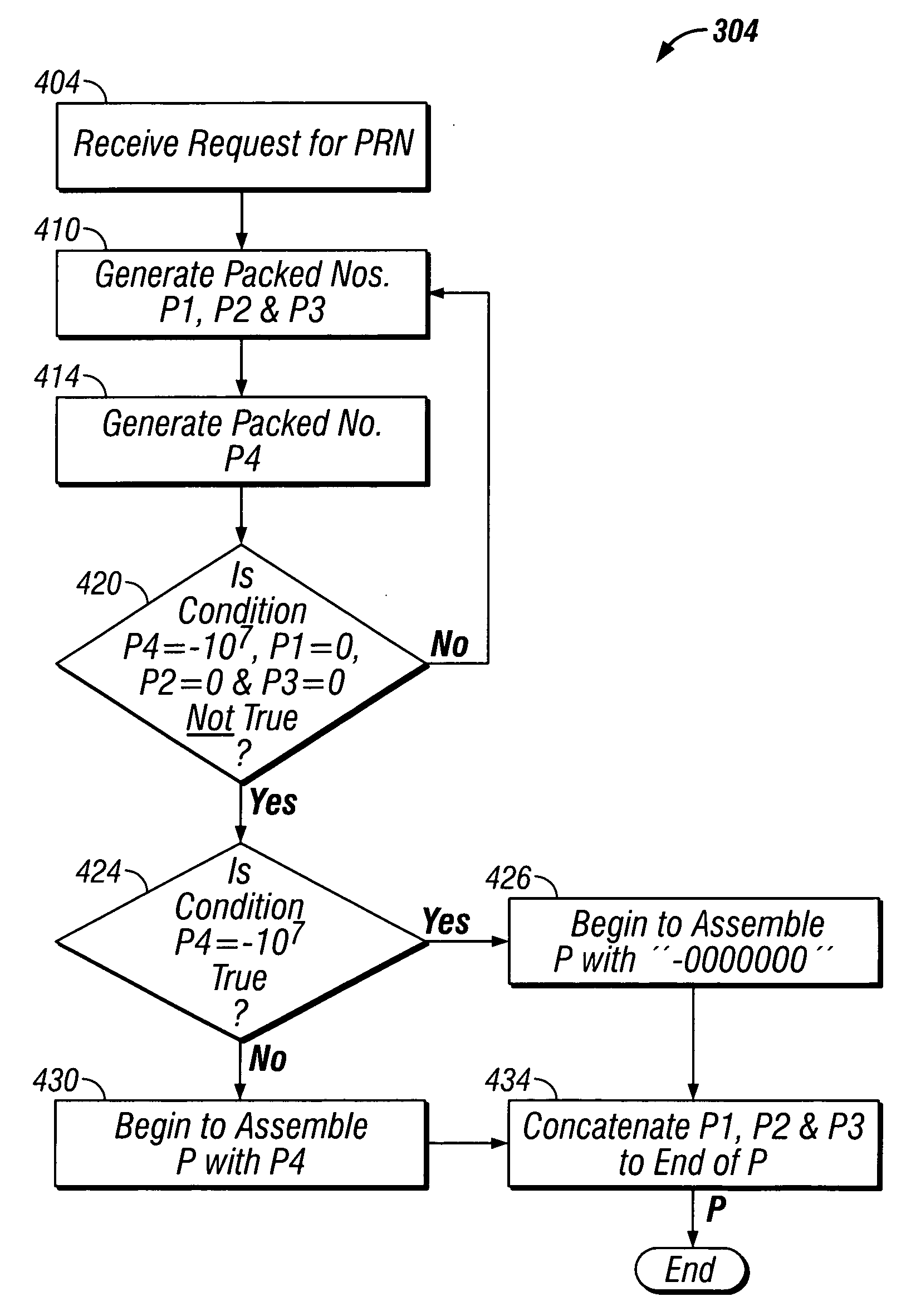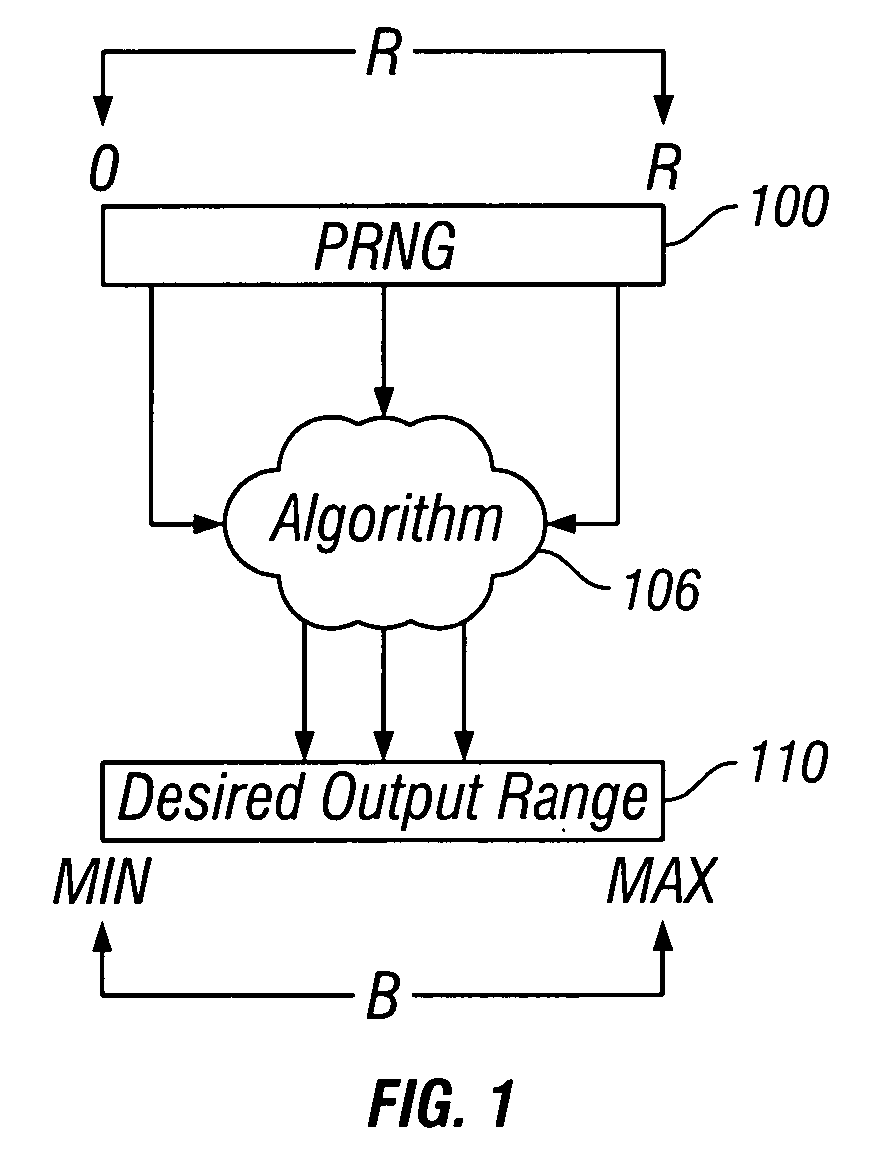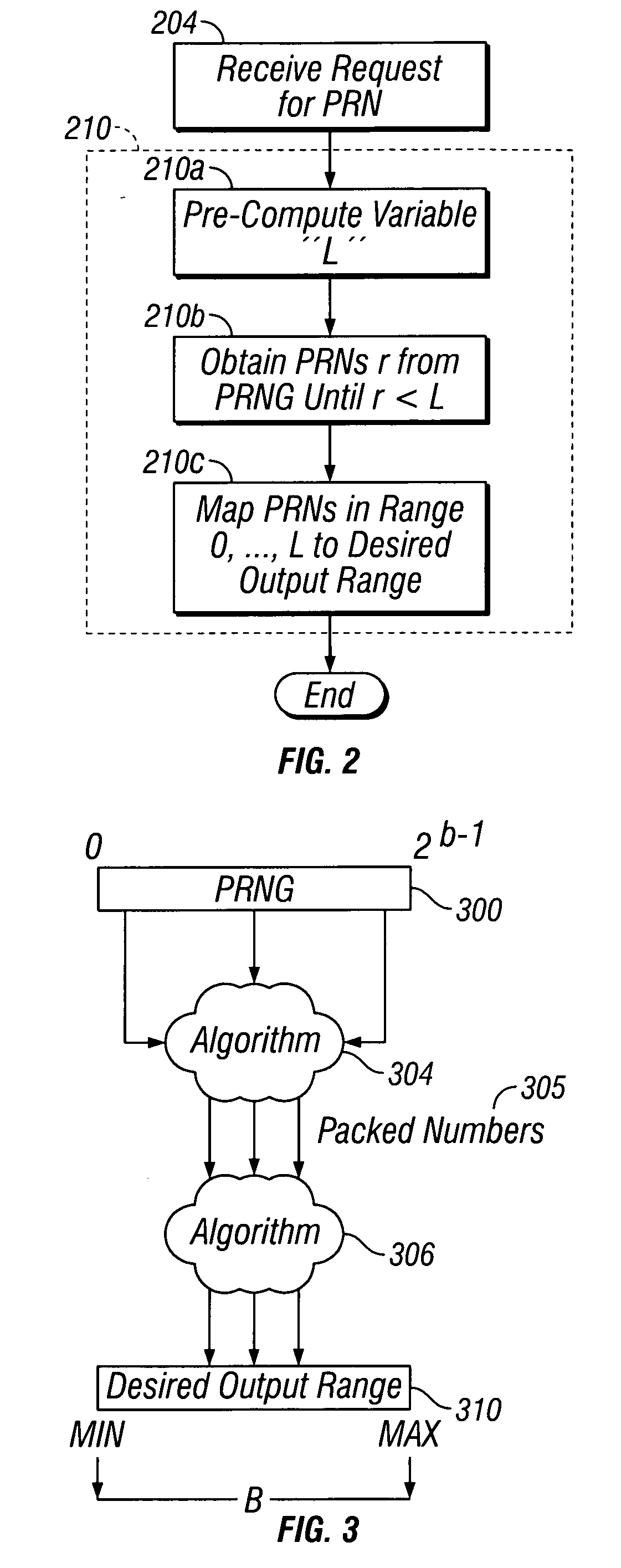Mapping pseudo-random numbers to predefined number ranges
a technology of pseudo-random numbers and predefined ranges, applied in the field of mapping pseudo-random numbers to predefined number ranges, can solve the problem that the size of the target or desired output range may be larger than the size of the source range, and achieve the effect of reducing the cost of generating such numbers and reducing the pseudo-randomity
- Summary
- Abstract
- Description
- Claims
- Application Information
AI Technical Summary
Benefits of technology
Problems solved by technology
Method used
Image
Examples
Embodiment Construction
Mapping to a Smaller Desired Output Range
FIG. 1 illustrates, in general, a technique for mapping the range of a b-bit PRNG to an arbitrary smaller desired output range or target range. A b-bit PRNG typically can generate uniformly distributed b-bit random numbers in a range 0, 1, . . . , R, where R is 2b−1. The range of the PRNG may be referred to as a source range. The period of a b-bit PRNG then will be 2b−1. In one implementation, PRNG 100 is a 32-bit PRNG. Thus, PRNG 100 has a period of 232−1. What this means is that PRNG 100 can generate 232−1 integers in the range 0, 1, . . . , R, where R is 232−1. In this implementation, the smaller Desired Output Range 110 is min, . . . , max, with (max−min)≦R. The period of the Desired Output Range 110 is B, which is max−min+1 and is less than the period of PRNG 100. An Algorithm 106, e.g., a mapping function, is used to map the output of PRNG 100 to a smaller Desired Output Range 110. The Algorithm 206 is implemented in C programming lang...
PUM
 Login to View More
Login to View More Abstract
Description
Claims
Application Information
 Login to View More
Login to View More - R&D
- Intellectual Property
- Life Sciences
- Materials
- Tech Scout
- Unparalleled Data Quality
- Higher Quality Content
- 60% Fewer Hallucinations
Browse by: Latest US Patents, China's latest patents, Technical Efficacy Thesaurus, Application Domain, Technology Topic, Popular Technical Reports.
© 2025 PatSnap. All rights reserved.Legal|Privacy policy|Modern Slavery Act Transparency Statement|Sitemap|About US| Contact US: help@patsnap.com



